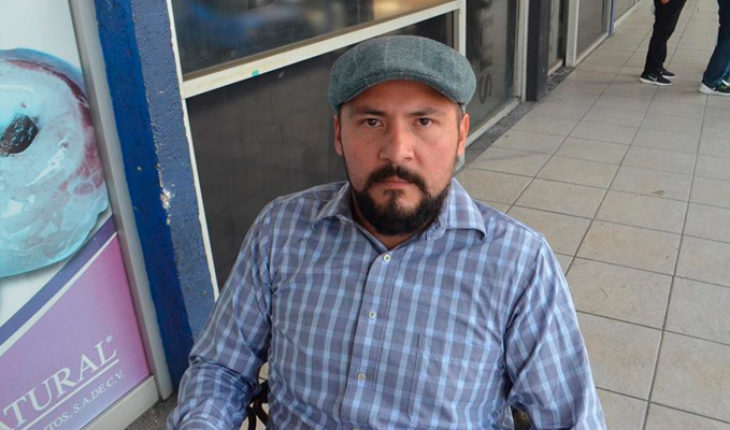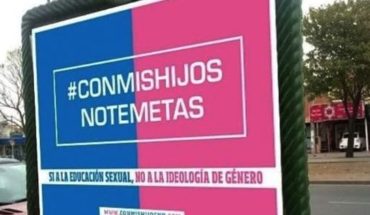Morelia, Michoacan.-the right natural integrally related rights with genetic physical and spiritual of the human species. Therefore, human rights are powers which has the humanity, which should be recognized, respected and protected to ensure their comprehensive development within legally organized societies. They are natural values have for the simple fact of being it and allow us to live with dignity.
Talk about dignity in relation to human rights is to speak of its essence. Derived from the Latin adjective dignus valuable meaning. It is the emotional state that makes us feel valued and respected. For this reason it must be recognized, respected and protected by the State and by all, since it is an integral part of us from birth to death and cannot be deleted or conditioned or ignored by no one. In this context, the theory of human rights emerged as a fight in favour of human dignity.
Later human rights were primarily developed in the 19th century by social and political phenomena that originated declarations of rights that inspired the construction of the current international protection system, as it is the case of the Declaration of the rights of man and of the citizen, within the framework of the French Revolution of 1789.
Now, in the second world war killed millions of people for the sake of an ideology devoid of respect for human dignity. Concluded the conflict the international community conducted a profound reflection on the fateful ravages and generated international treaties that impose on the States part, recognition and legal protection of rights, as well as the creation of the Organization of the United Nations, international organization comprising the majority of the countries with the aim of promoting world peace, through the implementation of international law, diplomatic dialogue and working together with activists from the civil society to build solutions to global problems.
At that point, it is understood that human rights are universal because they belong to all people, regardless of their ethnic, racial or national origin, gender, age, disability, social or health condition, religion, opinions, sexual preferences, civil status or any other human condition. They come from the ancient doctrines of freedom, of a historical phenomenon full of liberal ideological armed movements, a fateful Holocaust and the Foundation of a system of comprehensive protection of rights that gave power to further legitimate peaceful social movements in favour of democracy and human rights, the peaceful movement against racism, the Viet Nam war and the civil rights of marginalized communities, mainly from the afrodecendientes, one of them was in the United States of America, which inspired a generation of young people in the core of a New York neighborhood to create a flagship subculture urban «gives greater value to the individual imagination» and the struggle to transcend the difficulties in an environment beaten by the governmental irresponsibility: political, economic, social and cultural marginalization.
Hip Hop Culture Hip! hop! hip! hop! With the euphoric rhythm of a Scat (improvisation vocal using words or syllables in order to convert the voice into a musical instrument), rapper Keith “cowboy” Wiggins was laughing friend, newly enlisted in the armed forces of the United States, imitating the sound of boots a soldier marching mecanizadamente on the asphalt at a pace nearly flawless. Later it was used as crutch by Cowboy, Lovebug Starski, and DJ Hollywood to improvise with the microphone in their live performances, which then used The Sugarhill Gang band in their song “Rapper’s Delight” in 1979. At the same time the term was taken by Afrika Bambaataa in an interview with the Village Voice magazine in order to give it a name to one of the most influential subcultures of the 21st century.
Hip Hop is a cultural social movement emerged in the County of the Bronx, in New York, during the 1970s, formed basically by four artistic expressions, also called four fundamental elements: graffiti, Break Dance, Disc Jockey (Dj) and Rap. These disciplines arose spontaneously in the marginal areas of southern New York and were later taken as base, according to the historical moment, that they comprise a subculture with own principles and tools of expression under the name of Hip Hop, intending to stop and overcome the gang violence and social marginalization to the Government it didn’t solve.
Genesis of Hip Hop during the 1960s American society lived a phase of social awareness known as peaceful revolution, which emerged fights against the war in Viet Nam, on behalf of the civil rights of women, the African-Americans and marginalized social groups. Activists such as Martin Luther King, Malcolm X and the Black Panthers self-defense group led these struggles with the enactment of the Civil Rights Act of 1964, where they recognized these rights, however Americans, natives, the women, latinos and young people continued to be victims of racism and social segregation: they not given work, not allowed to receive education and health care and they were despised by social groups different from them. This continued in the 1970s affecting the generation of the new decade. The rights were only on paper and they were not guaranteed by those who should do so.
Poor conditions of life in the South of New York caused social decline and the resurgence of violent gangs that created many problems in the community. Under these circumstances the leaders of gangs, gathered, managed a peace pact between them and conjuntaron four urban artistic expression within a street subculture: Hip Hop.
From this event subculture emerges as a movement to combat and transcend the difficulties caused by marginalization and lack of governmental public policies that guarantee civil rights in New York neighborhoods.
Declaration of peace’s Hip Hop extended and consolidated once Hip Hop in the United States and part of the world, on 16 May 2001, social activists, UNESCO and pioneers of this subculture presented to UN Hip Hop Declaration of peace. Letter with eighteen principles which recognizes Hip Hop as a cultural phenomenon of peace, international prosperity and not an activity that corrupts young people, also advises them on how to practice and maintain full culture to prevent it from losing its character peaceful, conscious and progressive.
What is the nature of the Declaration? The Declaration is an international treaty of a legal nature imposed on States to challenge compliance. It is a document of a philosophical nature in which Hip Hop was recognized by the international body as a cultural phenomenon with influence and vowed to work for peace, using his artistic expressions and the knowledge acquired; It is also an initiative coming from civil society that aims to solve the social problems affecting the human rights of young people, mainly. Implicitly recognizes the following rights: dignity and second non-discrimination. Respect the dignity and rejects discrimination.
Room. It promotes respect for children, femininity, masculinity, the brotherhood and family.
Cares for the dignity and reputation of children, elders and ancestors of the Hip Hopas.
The free manifestation of the eleventh ideas. It contributes to the survival of our free thought and Universal independence.
Free development of the personality second. It respects the free development of each other’s lives.
It rejects any inference that tries to alter a free decision.
Freedom of belief eleventh. It is a tool that can be used by any race, tribe, religion or another human expression, to communicate their ideas or works.
Hip Hop is multifaceted, multicultural, multicreyente, multiracial and committed to peace.
The fourth child and youth well-being. He acknowledges their influence on society, especially on children and youth.
It encourages respect for children and cares for the dignity and reputation of femininity, masculinity, the brotherhood and family.
Cares for the dignity and reputation of children, elders and ancestors of the Hip Hopers.
Respect for the law, third. It is a responsible culture.
It respects and complies with the moral codes of their culture as well as the laws of your country.
The fifth education. It promotes education as a means to achieve peace, prosperity and self-esteem.
Self-determination of the first cultures. Hip Hop is a separate culture which seeks consciousness and collective growth.
Fifteenth. It respects and learns from the essence and customs exist in every corner of the planet.
To decent work and paid seventh. The practice of Hip Hop can be paid money, food, shelter, information and other resources, but it is not a product but a self-sustaining life philosophy.
The fifteenth healthy environment. Planet Earth is our protective mother, therefore respects nature and all manifestations of his creation.
Peace and nonviolence, tenth. Encouraged to build healthy relationships and lasting based on love, trust, equality and respect, as well as not to abuse or mislead others.
12th. It does not endorse any form of hate, deceit, prejudice or act of theft will not take part in any violent war within their own culture.
13th. Rejects the immature acts that generate violence and prioritizes settlement mechanisms PacificFICA to resolve any dispute.
Encouraged to consider forgiveness and dialogue before that any retaliation.
The fourth rebellion. He acknowledges the war as a last resort when peaceful and understanding resources have failed repeatedly.
Cultural solidarity development fifteenth. It respects and learns from the essence and customs exist in every corner of the planet seventeenth. The Hip Hoppas must share resources and offer their expertise as indifferent and often as possible.
It is the duty of all Hip Hoppa alleviate human suffering and injustice.
Culture cares, preserves and develops its major objectives when the Hip Hoppas care for, preserve, and develop each other.
Social participation room. He acknowledges their influence on society, especially on children and youth.
Fifth. Encouraged to use the acquired wisdom to contribute positively with their best ideas and his best work.
Eighth. It invites all kinds of non-profit organizations to enrich their goals, by promoting the participation of specialists from the Hip Hop so that they share their knowledge and experiences through any social activity.
Fifteenth. Calls to fight poverty, injustice and build a more solidarity-based society and a better world.
Conclusion and proposals the Declaration is a document enshrined by the United Nations acquired the character of historic, cultural, and humanitarian legacy for human rights and world peace.
It reaffirms to Hip Hop as a countercultural phenomenon committed to the recognition, respect and the development of human rights. Philosophically guide young people the knowledge and social activism, from their own individual transformation. With the youth will have a tool that positively develops his skills, artistic, intellectual, human and spiritual.
Taking the principles of the Declaration, Hip Hoppa acquires a historical and social commitment to this culture, inviting him to approach the human, educational, artistic and social knowledge of reality to become a leading participant in the transformation positive of their community using their intellectual and artistic experiences within: entrepreneurship social, cultural and economic; civil society organizations; cultural and political; and the private sector, which will contribute to this important objective from their own individual transformation.
It will be very helpful for the social and cultural, public and private education sectors which support Hip Hop and its Declaration so that policies be implemented practice optionally preparations and basic levels of education as an element complementary training, as well as social activities in general, so that young people develop harmoniously all the faculties of the human being, respect for human rights and awareness of international solidarity, in order fight against ignorance and its effects, servitudes, fanaticism and prejudice, fundamental principles of the right to education recognized in the third article of the Mexican Constitution policy.
About the author Raúl Ramírez Álvarez. He graduated in law, musician and rapper originally from the city of Morelia, Michoacán. He is a pioneer of Morelia’s Hip Hop and with-founder of the collective us, other movement. He is promoter and diffuser of the Rap and Hip Hop culture.
Social networks are Spotify bisorman.oficial FB bisorman Ig /bisorman_oficial Youtube Bisorman
translated from Spanish: Human rights, ideological scaffolding of Hip Hop
November 18, 2018 |





